Leather is a luxurious material that often requires special care to maintain its appearance. Leather conditioner is a must for anyone who owns leather goods. It helps to keep your leather looking new and prevents it from cracking and drying out. However, not everyone wants to use the same old leather conditioner every time. If you’re looking for an alternative, here are several great options to consider!
What Are Leather Conditioners?
Different leather conditioners are made of different ingredients. Some conditioners are made of natural ingredients like beeswax, while others are made of synthetic materials. Different types of leather conditioners are designed for different types of leather. For example, some conditioners are specifically designed for suede or nubuck.
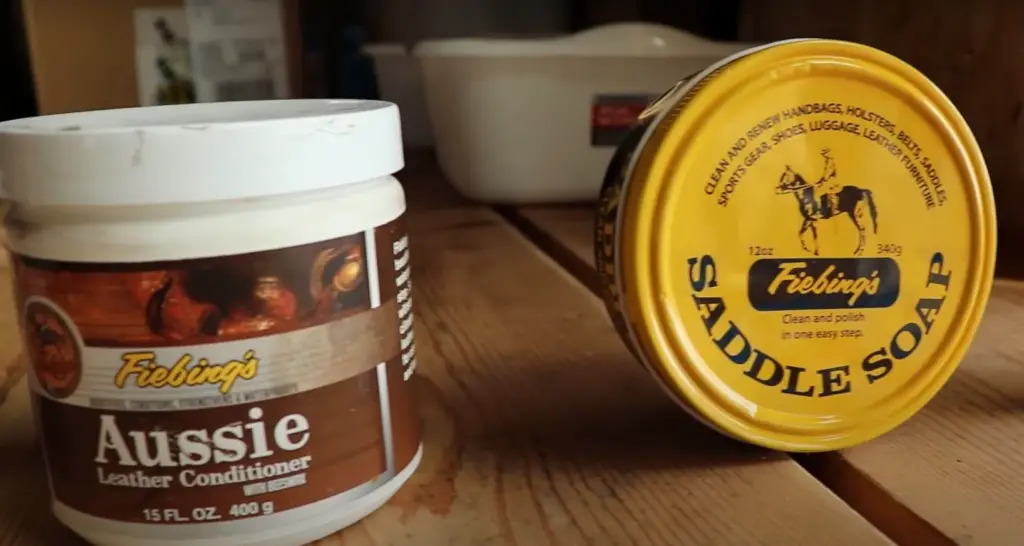
While leather conditioners can be effective at keeping your leather goods looking new, they can also cause problems if they are not used properly. Leather conditioners can darken the leather, change its color, and make it more susceptible to staining. In some cases, leather conditioners can actually damage the leather. If you are not careful when applying a leather conditioner, you could end up doing more harm than good [1].
Types of Leather Conditioners
Leather Oils
To apply the leather oil, simply pour a small amount onto a clean, soft cloth and rub it into the leather in a circular motion. Once you have evenly applied the oil, leave it to soak in for at least an hour before wiping away any excess with another clean cloth.
This type of leather conditioner can be used for all types of leather, including furniture, car seats, and clothing. It is recommended to use them not more than once every few months, as over-conditioning can cause the leather to become greasy and attract dirt.
Leather Creams
To apply a leather cream, simply rub it into the leather in a circular motion with a clean, soft cloth. Once you have evenly applied the cream, leave it to soak in for at least an hour before wiping away any excess with another clean cloth.
This type of leather conditioner is best suited for smooth leather, such as those used for furniture and clothing. It can be used on all types of leather, but it is not recommended for suede or nubuck as it can darken the material.
Leather Waxes
To apply a leather wax, you should have two clean, soft clothes on hand. Pour a small amount of wax onto one of the clothes and rub it into the leather in a circular motion. Once you have evenly applied the wax, use the second cloth to buff it into the leather. This will create a shine and help to evenly distribute the wax.
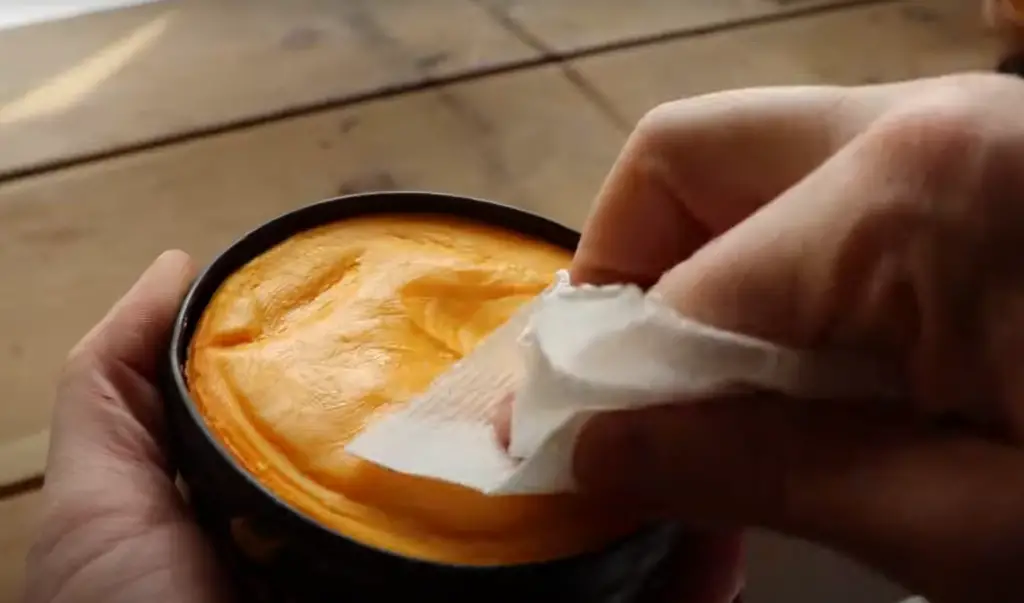
Leather waxes are best suited for smooth leather and can be used on all types of leather, including furniture, car seats, and clothing. However, they are not recommended for suede or nubuck as they can darken the material.
Leather Lotions
It is recommended to apply lotion to leather goods that are starting to show signs of wear, such as cracks or dullness. These lotions usually come in a cream or spray form, making them easy to apply.
Before using lotion you should always test it on a small, inconspicuous area of the leather to make sure it does not cause any damage or change color. To use lotion, simply apply it to a clean, soft cloth and rub it into the leather in a circular motion. Once you have evenly applied the lotion, leave it to soak in for at least an hour before wiping away any excess with another clean cloth. Lotions are best suited for smooth leather and can be used on all types of leather, including furniture, car seats, and clothing.
Homemade Leather Conditioner
If you are looking for a more natural way to condition your leather, there are a few recipes that you can try at home. These usually contain ingredients that you already have in your kitchen, such as olive oil or vinegar.
To condition your leather with olive oil, simply pour a small amount onto a clean cloth and rub it into the leather in a circular motion. Once you have evenly applied the oil, leave it to soak in for at least an hour before wiping away any excess with another clean cloth.
For a vinegar-based leather conditioner, mix equal parts vinegar and water in a spray bottle and spritz it onto the leather. Once you have evenly applied the mixture, leave it to soak in for at least an hour before wiping away any excess with a clean cloth.
Both of these recipes are best suited for smooth leather and can be used on all types of leather, whether you are conditioning your leather pants and jackets or furniture and car seats.
Benefits Of Using Leather Conditioner
When applied correctly, leather conditioners can prolong the life of your leather goods significantly. The leather conditioner works to replenish the natural oils that are lost over time due to exposure to the elements and everyday wear and tear. This helps to keep the leather supple, soft, and looking new for longer.
The leather conditioners are not innovations. The idea of using natural oil to condition leather dates back centuries when people used to rely solely on natural ingredients to take care of their belongings. However, modern leather conditioners have gone through many innovations and now come in a variety of formulations to suit different needs.
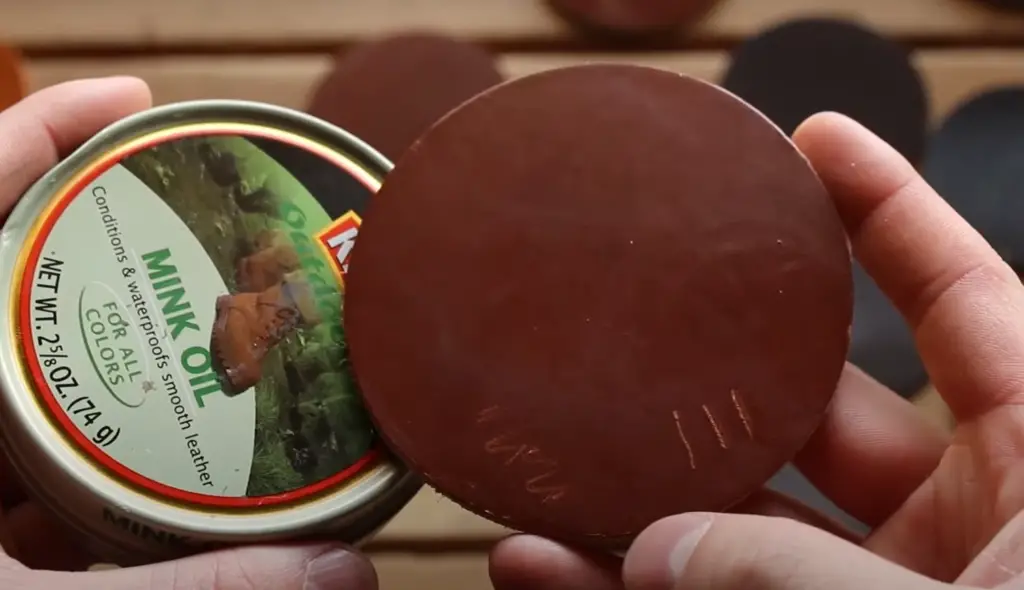
Another benefit of using the leather conditioner is that it gives a light pleasant smell to the leather product. It is one of the most important advantages of using a quality leather conditioner. It can smell different depending on the ingredients used in the conditioner. For example, some conditioners can have the smell of neatsfoot oil or lanolin.
Many of the leather conditioners on the market today use similar recipes to those used hundreds of years ago. The difference is that today’s products are more refined and easier to use [2].
What Are the Best Leather Conditioner Alternatives?
Natural Baby Oil
Natural baby oil is a perfect alternative to leather conditioners. It will help to keep your leather goods looking new and shiny. The oil will also help to protect the leather from drying out and cracking. This oil is usually made of jojoba or almond oil, which is both very good for the skin and leather products. It is not difficult to find it in stores, and you can usually find it very cheaply.
You should apply the natural baby oil to a clean and dry cloth, and then rub it into the leather. You can also use a brush to apply the oil if you prefer. You should then leave the leather to soak in the oil for at least an hour before wiping it off.
Coconut oil
Coconut oil is another excellent alternative to leather conditioners. It provides the leather goods with a light coconut smell, as well as keeping the leather soft and supple. Coconut oil is also very good for the skin, so it is a perfect choice if you have sensitive skin.
Coconut oil has a solid structure at room temperature, so you will need to melt it before using it. You can do this by putting the coconut oil in a bowl and then microwaving it for a few seconds. Once it has melted, you should apply it to a clean and dry cloth, and then rub it into the leather. As with natural baby oil, you should leave the leather to soak in the oil for at least an hour before wiping it off. Coconut oil is also a very good moisturizer, and it can help to prevent the leather from drying out and cracking. You can find coconut oil in most health food stores, or you can order it online.
Lemon oil
Lemon oil is another excellent alternative to leather conditioners. Lemon oil is a very good disinfectant, so it can help to prevent the growth of bacteria on the leather. Its structure is similar to that of vinegar, so it can also help to break down dirt and grime. Lemon oil is also a good choice if you have sensitive skin, as it is very gentle. You should apply the lemon oil to a clean and dry cloth, and then rub it into the leather. Its lemon smell will also help to freshen up the leather. As with the other oils, you should leave the lemon oil to soak in for an hour before wiping it off. You can find lemon oil in most health food stores and drug stores.
Olive oil
Olive oil is another good alternative to leather conditioners. If your leather goods are not new and fresh, then olive oil can help to restore their shine. It is also a very good moisturizer, so it can help to prevent the leather from drying out and cracking. You can put this oil in a bottle with a spray nozzle, and then apply it to the leather. The effect of applying olive oil can appear in different ways, depending on the type of leather. Some people prefer to leave it overnight, while others wipe it off after an hour. You can find olive oil in most supermarkets [3].
Beeswax
This product is a little more difficult to find than the others, but it is very effective. Beeswax will help to protect the leather from water and stains. It can also help to keep the leather soft and supple. You should apply the beeswax to a clean and dry cloth, and then rub it into the leather. The beeswax will need to be melted before you can use it, so you can either put it in a bowl and microwave it for a few seconds or put it in a saucepan on the stove. Once it has melted, you should apply it to the leather and then leave it to cool. You can find beeswax in most health food stores.
How to make DIY leather conditioners?
Some people don’t trust commercial leather conditioners or they just don’t want to spend a lot of money on them. Here are 3 DIY leather conditioner recipes that you can make at home with things that you probably already have in your kitchen.
Recipe 1. This first recipe is very simple and only requires two ingredients that you likely already have in your home.
Ingredients:
- 1 part olive oil;
- 1 part vinegar;
Instructions:
- Combine equal parts olive oil and vinegar in a bowl;
- Use a clean, soft cloth to apply the mixture to your leather goods;
- Buff the leather with a dry, soft cloth to remove any excess oil;
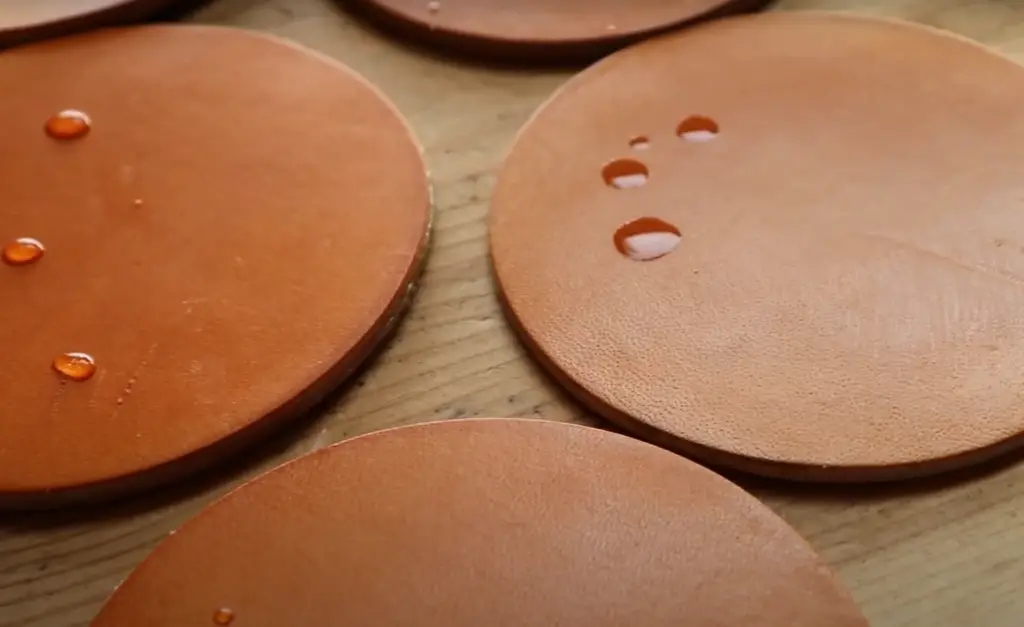
Recipe 2. This second recipe is a bit more complex than the first, but it will leave your leather goods looking shiny and new.
Ingredients:
- 1/4 cup olive oil;
- 1/4 cup vinegar;
- 1/4 cup water;
- 1 tablespoon beeswax;
Instructions:
- Combine olive oil, vinegar, and water in a bowl;
- Add the beeswax to the mixture and stir until it is completely melted;
- Use a clean, soft cloth to apply the mixture to your leather goods;
- Buff the leather with a dry, soft cloth to remove any excess wax;
Recipe 3. This last recipe is similar to the second, but it uses different ingredients that you might already have in your home.
Ingredients:
- 1/4 cup linseed oil;
- 1/4 cup vinegar;
- 1/4 cup water;
- 1 tablespoon beeswax;
Instructions:
- Combine linseed oil, vinegar, and water in a bowl;
- Add the beeswax to the mixture and stir until it is completely melted;
- Use a clean, soft cloth to apply the mixture to your leather goods;
- Buff the leather with a dry, soft cloth to remove any excess wax;
These are just three of the many recipes for DIY leather conditioners that you can make at home. Other recipes can contain such ingredients as aloe vera gel, cocoa butter, and essential oils. Get creative and see what works best for you!
One disadvantage of DIY leather conditioners is that they don’t last as long as commercial ones. You will likely have to reapply them more often. But, if you are looking for a more natural or budget-friendly option, then DIY leather conditioners are definitely worth a try [4]!
FAQ
What can I use instead of leather conditioner?
There are a few different options that you can use instead of leather conditioner, depending on what you have on hand and what your budget is. You can use olive oil, vinegar, or even baby oil to keep your leather goods looking new.
How do I use olive oil as a leather conditioner?
To use olive oil as a leather conditioner, simply apply a small amount of it to a clean cloth and rub it into the leather in a circular motion. Allow the olive oil to soak in for at least an hour before wiping away any excess with another clean cloth.
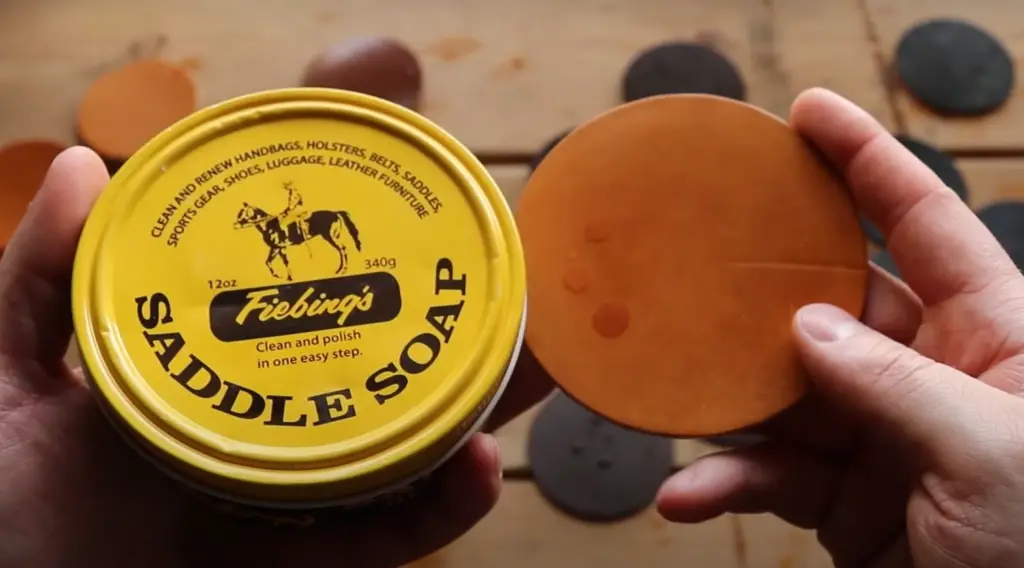
How do I use vinegar as a leather conditioner?
Mixing equal parts vinegar and water is a great way to keep your leather shoes looking fresh. Simply apply the mixture on a clean cloth in circular motions, then allow it to sit for at least an hour before wiping away any excess moisture with another dry part of fabric or paper towels!
Is Vaseline good for leather?
While Vaseline can be used as a leather conditioner, it is not the best option. It can leave your leather goods looking greasy and can attract dirt and dust. If you do choose to use Vaseline, make sure to apply it sparingly and wipe away any excess before it has a chance to dry!
What household items can restore leather?
There are a few different household items that can be used to restore leather, depending on what you have on hand. Vinegar, olive oil, and even baby oil can help keep your leather goods looking new. Simply apply a small amount of whichever substance you choose to use on a clean cloth and rub it into the leather in a circular motion!
What can I use to moisturize leather?
There are a few different options that you can use to moisturize the leather, depending on what you have on hand and what your budget is. However, the best option would be to use a leather conditioner or lemon oil.
What oil is best for leather?
Olive oil is a great option for leather, as it helps to keep the leather supple and soft. However, if you do not have olive oil on hand, any natural oil will do the trick!
How often should I condition my leather?
It is generally recommended that you condition your leather once every three to six months. However, if you live in a dry climate or use your leather goods frequently, you may need to condition them more often!
Do leather conditioners smell and have color?
The leather conditioners usually have a light smell that dissipates quickly, and they are typically clear or very lightly tinted.
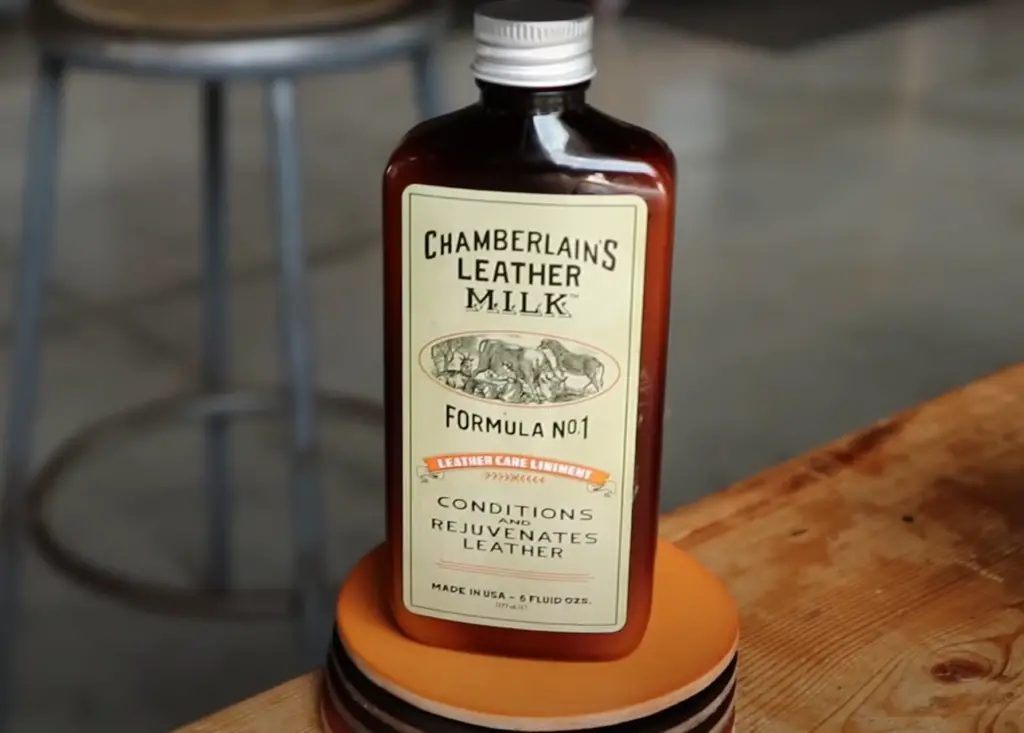
Can I use fabric softener on my leather?
While you can use fabric softener on your leather, it is not the best option because it can leave your leather goods looking greasy and can attract dirt and dust. Moreover, it can also darken the leather over time!
How do I know if my leather is real?
There are a few different ways that you can tell if your leather is real. First, take a close look at the grain of the leather – real leather will have a natural grain pattern, while fake leather will typically have a printed grain pattern. Second, smell the leather – real leather should have a subtle, natural smell, while fake leather will often have a chemical smell. Finally, touch the leather – real leather will usually be softer and more supple than fake leather.
What is the best way to store my leather goods?
The best way to store your leather goods is in a cool, dry place. Avoid storing them in direct sunlight or in humid areas, as this can cause the leather to crack or deteriorate. If you are not using your leather goods for an extended period, consider wrapping them in acid-free tissue paper to help protect them from the elements!
Useful Video: 5 Leather Conditioners & Cleaners
Conclusion
While leather conditioner is the best way to keep your leather goods looking new, there are a few alternatives that can work in a pinch. Baby wipes, vinegar, and olive oil can all be used to clean and condition leather. Just be sure to test a small area first to see how your leather reacts. With a little care and attention, you can keep your leather goods looking like new for years to come.
References:
- https://www.libertyleathergoods.com/leather-conditioner/
- https://steelhorseleather.com/blogs/the-journal/what-does-leather-conditioner-do
- https://blog.thejacketmaker.com/diy-leather-conditioner/
- https://www.bobvila.com/articles/homemade-leather-conditioner/







I’ve found that coconut oil works wonderfully as a natural leather conditioner alternative. Just rub a small amount into the leather and let it soak in overnight. It leaves the leather supple and conditioned without that overpowering chemical smell you get from synthetic conditioners. Coconut oil is inexpensive, easy to find, and all natural – it’s become my go-to leather conditioner substitute.
If you’re looking for a handy leather conditioner substitute around the house, I’ve had great luck using olive oil. Just a tiny bit rubbed in with a soft cloth will nourish dried out leather. It’s absorbed nicely and leaves no oily residue. Olive oil conditions leather beautifully without darkening or discoloring it. Much cheaper than branded leather conditioners too!
I stumbled upon a great homemade leather conditioner using beeswax when I ran out of my usual brand. Just melt some beeswax into coconut or olive oil over low heat. Let it cool into a paste and rub it into your leather goods. This all natural recipe leaves leather supple and protected. The beeswax gives it more holding power than oils alone. And it imparts a lovely subtle honey scent.
When my leather furniture started looking lackluster and dry, I discovered a simple alternative leather conditioner right in my pantry – vegetable oil! Just a small amount massaged in restored the supple feel and richness of color. It’s a budget friendly conditioner substitute that nourishes without leaving residue. I don’t know why I ever bought expensive store brands.
If you’re looking for an easy alternative to leather conditioners full of mystery chemicals, try a little apple cider vinegar. I mix one part vinegar with two parts olive oil, massage it into dry leather, and let it soak in for a bit. It gently cleans while conditioning the leather, leaving it soft and revived. This trusty home remedy costs a fraction of what I used to pay.
For an effective natural leather conditioner, look no further than your kitchen cupboard. A 50/50 mix of beeswax and carnauba wax melted together makes a fantastic conditioning agent for all types of leather goods. Let the melted wax mixture cool into a salve, then apply a thin layer. The wax seals in moisture and protects the leather. Plus, it has a pleasant faint honey aroma.
If you want to avoid synthetic chemicals found in many leather conditioners, try this easy homemade recipe: melt a tablespoon of lanolin wax crystals into a cup of coconut oil over low heat. Let cool slightly and apply a thin coat to leather. Lanolin conditions while the coconut oil penetrates to soften. It restored the suppleness to my dried out boots and handbags.
When I needed to condition my leather coat but had run out of conditioner, I decided to try using banana peel extract. Simply blend some peeled ripe banana in a food processor until smooth, then gently rub it into the leather. This unusual trick worked surprisingly well to soften and moisturize dried leather. And it didn’t leave any sticky residue behind.
I recently came across an unexpected homemade leather conditioner – glycerin soap! Gently rub it over cracked or dried out leather goods using a damp cloth and it cleans while leaving leather soft and supple. Glycerin attracts and seals in moisture. It worked better than the expensive leather conditioner I used to buy. And soap is so much cheaper!
If you want to condition your leather without chemicals, try making your own beeswax paste. Simply heat equal amounts of beeswax and olive oil in a double boiler until melted. Allow to cool, and apply a thin coat to leather goods. The beeswax seals in the olive oil, leaving leather conditioned but not greasy. It brought my old leather bag back to life!
When my leather shoes were desperately in need of conditioning, I decided to try using almond oil instead of my usual chemical-laden conditioner. After applying a few drops and letting it soak in overnight, the leather was remarkably softer and more supple. Sweet almond oil penetrated deep to rehydrate the leather. It’s completely natural and worked better than any product I’ve tried.
As a cheaper alternative to store-bought leather conditioners, you can make your own with vinegar and flaxseed oil. Simply sponge leather items with a mix of 2 parts vinegar to 1 part oil. Let dry completely. The vinegar cleans while the flaxseed oil conditions and protects the leather. It’s easy, natural, and restored the softness to my stiff leather bags.